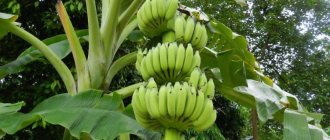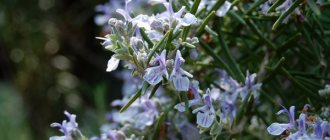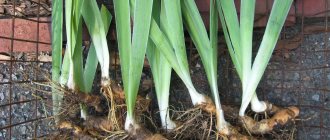It's hard to find a person who doesn't like pineapples. But few people know that you can grow this extraordinary fruit yourself. Let's figure out how to do this.
From seeds
Sowing by seeds is probably the most difficult of all growing methods. Those fruits that are sold in stores are usually collected at the stage of technical ripeness and are completely unsuitable for this planting option. You need to purchase mature pineapple seeds. They are dark brown in color and 3–4 mm in size.
Only mature sprouted seeds are suitable for planting pineapple.
Carry out preliminary preparation of the material for planting.
- Place the seeds in a humid environment for about a day. This could be a sponge or a wet wipe.
- For planting, take peat and sand in equal quantities.
- Bury the swollen seeds into the soil mixture no more than 2 cm.
- Pour warm water over everything and create a greenhouse effect. Use film, plastic bag or glass. Now they sell ready-made mini-greenhouses - they are perfect for germinating pineapple seeds.
A ready-made greenhouse for growing pineapple seedlings can be purchased at a garden store
Place the container in a warm place: the most favorable temperature is considered to be from 22 °C to 30 °C. The higher it is, the faster the seeds will germinate. You can put the greenhouse on the battery by placing a board under it. At average room temperature, the first shoots will appear in about a month.
A pineapple sprout at the three-leaf stage can be transplanted from the mother into a separate pot
Monitor the soil moisture and feed the seedlings once every 3 weeks. The grown seedlings must be planted into separate pots so that each young shoot turns into an independent fruit-bearing plant. As the seedlings grow, it is necessary to increase the volume of the pot so that the development of the root system in young shoots does not slow down.
Interestingly, all cultivated pineapples do not contain seeds, but if they are crossed with wild forms, they regain the ability to form them.
foodnews-press.ru
https://foodnews-press.ru/zdorovoe-pitanie/45-topy-foodnews-press/1028-top-20-interesnih-faktov-ob-ananasah
From the top
In order to grow a pineapple from the top, you need to choose the right fruit. Winter fruits are not suitable for this, because during transportation the rosette of the plant often freezes. A fresh fruit with a dense, healthy top is suitable. The leaves should be green, not dried out or spoiled. Stepping back 2–3 cm from the leaves, cut off the top.
It is necessary to cut off the top for planting, 2-3 cm away from the leaves.
Here are step-by-step instructions on how to prepare a pineapple rosette for planting:
- If the pineapple is ripe, try carefully unscrewing the socket. All the juicy pulp needs to be peeled off, as well as the lower leaves.
- The cut is treated against spoilage with a manganese solution. You can dry the top for one or two days to prevent rotting.
- To accelerate the formation and development of roots, treat the cuttings with growth stimulants (Epin, Kornevin). To do this, dip the top cut side into the prepared solution for 12–18 hours.
- For further germination, place the tuft in water, securing it to the surface. If the container with water is quite narrow, then the plant will support itself, due to the leaf rosette. If the seedling falls through, secure it with toothpicks or a cardboard circle with a hole in the middle.
- After waiting for the roots to appear, the top is transplanted into specially prepared soil.
Video: how to germinate the top of a pineapple at home
Ways to grow pineapple
In average climates, pineapples can only be grown in greenhouse conditions, greenhouses or on a windowsill. One of the reasons is the long cultivation of pineapple until a mature fruit is obtained. Several years, up to 4, pass in anticipation of the formation of an inflorescence. And it takes six months for the fruit to fill and ripen. Later, the plant dies, leaving behind numerous shoots, which are used to propagate the plant on an industrial scale.
At home, fruiting occurs after 26 months of plant development. After the fruit is removed, the plant dies, leaving many offspring with which it is propagated. In indoor conditions, the plant blooms 25 cm high and at the age of 16 months. Flowering will begin in two months and lasts two weeks. One flower blooms for 1 day. The fruit takes up to six months to form and ripen.
So, you can grow pineapple:
- seeds obtained from a ripe fruit;
- shoots from an adult or dead bush;
- the top of a ripe pineapple.
The seed propagation method is rarely used, as this is associated with an extension of the growing season. For those who like to start from scratch, you need to know that you can collect seeds from ripe exotic fruit. At home, cross-pollination requires that two adjacent plants bloom simultaneously. Subsequently, the seeds are sown in light soil and after germination they are grown to 6 cm and planted in a permanent pot.
How to root correctly?
To grow a pineapple from the top as an indoor flower, the fruit must be divided and carefully processed. Otherwise, it will simply rot in the ground.
There are 2 ways to root a pineapple from the top:
- “crown” - a bunch of leaves with a core;
- apical part of the fruit.
It is difficult to say clearly which method is better.
Features of rooting tuft:
- It is easier to root a tuft at home, but after planting, only people who are well versed in the Bromeliad family can identify the plant by its leaves.
- A bunch of leaves reaching 70 cm in a small pot will be unstable, you will have to invent how to balance it. But the capacity you need is small.
Features of rooting apex:
- The top of the fruit is a little more difficult to root, but there will be no doubt that there is a pineapple in the pot. It is the opportunity to show off that often attracts flower growers when rooting store-bought fruit.
- Disadvantage: a plant grown at home from a cut top may rot. Especially if the pulp is not completely removed, or the wound is not healed well with callus.
Propagation using root cuttings
Growing pineapple at home using root cuttings is more often practiced. Growing fruit this way is much easier than using seeds. But at the same time there should already be an adult plant at home.
For propagation, daughter shoots located at the bottom of the stem or under the infructescence are taken. The length of the cuttings should be at least 15 cm with several rows of leaves. The cuttings are rooted in the ground, and after new green leaves appear, they are transplanted to a permanent place.
Rules for caring for pineapple
When the top has grown, the next question arises: how to grow pineapple at home so that the plant blooms and bears fruit?
In an apartment, a tropical pet needs special care with the creation of favorable conditions. The room temperature should be close to 25 degrees, and in winter - about 18 degrees.
Watering should be moderate; excessive watering causes the root system to rot. In summer you need to water the plant 2 times a week, and in winter - 1 time.
Lighting needs to be given special importance. Pineapple loves a lot of light, and one-sided lighting is enough for it; there is no need to turn it.
In winter, the pineapple will lack light, so it needs to be illuminated additionally. A fluorescent lamp is suitable for this. You need to illuminate for 8-10 hours a day, the lamp should be placed at a distance of 20 cm.
Feeding is also important for the plant. During the growing season (February to September), pineapple is fertilized every 2 weeks. Feed with mullein solution or mineral fertilizers. Alkaline fertilizers are not recommended.
Is it possible to grow a pineapple from the top: step-by-step instructions
You can grow a pineapple from the top. This is the fastest way to grow a plant, which is inferior to methods such as planting cuttings or seeds. For a successful landing, you need to complete several steps:
- Choose fresh pineapple from the store. A good, suitable specimen has elastic green leaves, hard skin, and a sweetish aroma. The fruit must not be eaten by midges. They often hide under the leaves of a plant.
- Remove the top of the pineapple. To do this, you need to cut off the top of the fruit (along with 4-5 centimeters of pulp). After this, you need to unscrew the leaves from the top of the fruit. The main thing is that there is no pulp left at all, otherwise the plant may begin to rot.
- The top of the pineapple must be turned upside down and left to dry for 1 week.
- Place the plant in water. The glass must be placed in a lighted place. In a few weeks, the top should acquire primitive roots. When the roots reach 5-6 centimeters, the plant can be planted in the soil.
- The plant is planted in the soil. In this case, its leaves should be on the surface. As a substrate, you can choose soil for cacti. The pot should be approximately 15 centimeters in height.
- Water the plant and place the pot in a warm, bright place. The soil should always be moist.
The plant takes a long time to take root. Rooting usually takes about 6 months. If all the rules of care have been followed, then after about six months the first flower will appear, from which the fruit will subsequently form.
Is it possible to grow pineapple at home not from the top?
There are several ways to grow pineapple. In addition to the top, you can use seeds. This method is complex and time-consuming, but some growers achieve good results. Therefore, the answer to the question of whether it is possible to grow pineapple at home in other ways is positive.
Seeds that you yourself extracted from a fresh pineapple are not suitable for planting. You can only use store-bought seeds.
The seeds, which can be used for planting, are brown in color and reach 4 mm in length.
- Before planting, seeds should be wrapped in a damp cloth for 24 hours.
- After the seeds have swelled, you can begin planting them in a mixture of sand and peat. The mixture should have been purified.
- Seeds should be planted to a depth of no more than 2 cm.
- The pot with seeds should be covered with polyethylene and placed in a warm place.
Seed germination depends on temperature. At normal room temperature, you can expect the first shoots to appear after 4-7 weeks. If the temperature is 30-33 o C, the first shoots will appear after 2-3 weeks.
In addition to maintaining the correct temperature, it is worth taking care of timely watering and fertilizing. The plant needs to be fed once every 3 weeks. It is best to use complex formulations.
Transferring a sprouted pineapple to soil for adult plants can be done when several leaves appear on the rosettes. The soil for replanting should consist of peat, sand, garden soil and humus in equal proportions.
Rules for caring for pineapple
It is not difficult to create comfortable conditions for pineapple. Required conditions:
- loose soil;
- proper lighting and humidity maintenance;
- watering and fertilizing according to schedule.
It is best to grow the plant on the eastern, western or southern windows of the house. At the same time, in the summer, when the sun coming through the window is especially hot, it is better to shade the pineapple. But in winter, when daylight hours are shortened, the owners of the exotic plant will have to take care of an additional 6-8 hours of lighting for the pineapple.
Pineapple does not tolerate cold. Therefore, a draft or watering with cold water is unacceptable. Also, you should not irrigate the leaves of the plant with water in winter.
Is it possible to grow pineapple at home ? Can! And believe me, this plant will not leave anyone indifferent. Follow the rules of care, and the evergreen pineapple will delight you all year round.
Basic nuances of choosing a fruit
To plant a pineapple at home successfully, you need to prepare:
- a clay pot 3 liters deep and at least 15 centimeters wide;
- store-bought soil or homemade soil mixture;
- polyethylene film for covering;
- fetus.
Of course, before you start planting, you need to choose a well-suited pineapple fruit. First of all, it must be ripe. It is easy to calculate the degree of maturity by the color of the skin - it will be golden yellow, without gray spots. And the fruit itself should be elastic to the touch. A mature one may sag slightly.
Basic instructions from professionals on choosing the right pineapple will help you avoid mistakes in choosing:
It is important to pay attention to the sheets. A good quality pineapple will have an even green color and be firm. Fruit with yellow or brown leaves should not be taken. You need to pay attention to the aroma of the fruit
A sweet aroma will indicate its freshness. If the smell is sour, it is overripe. There is no need to buy this one. The moderate degree of elasticity of a pineapple indicates its quality. There is no need to choose an overly hard fruit. As well as being too loose, this indicates poor quality of the product.
And one last thing. It is best to choose pineapples in late August and early September. Experts recommend purchasing several pieces at once - all in different stores. This will help significantly increase the likelihood of successful rooting. If you buy pineapple in winter, you need to make sure that it is not frozen. This will not make it possible to grow a healthy plant with a good harvest.
It will require good care in the future. But choosing a quality pineapple is a fundamental point in the growing process.
The top of the pineapple must be very juicy and fresh.
It is imperative to pay special attention to the leaves. If they are too dry or stained, this can only indicate that the fruit is damaged by pests
This means that the plant itself can also become infected. The top should be deep green.
How to prepare and root a seedling?
Preparation and rooting of the top - step by step:
- How to trim the top. The top can be cut off with a sharp knife and any remaining pulp removed. However, it is better to hold the leaves with one hand and try to unscrew them from the fruit, like a screw. Rolling is quick and more effective than top trimming, since improper trimming can lead to rot. With one hand we grab the fruit, with the other we hold a bunch of leaves at the base and try to carefully twist it out of the fruit, as if unscrewing a jar. If successful, the leaves and conical base should remain in the bunch.
- You can remove a few of the lower leaves to expose the stem.
- The prepared apical seedling should be set aside for 2 weeks to dry.
- The pineapple tail is then placed in a vessel of water or wet sand. Place it on the south window. Rooting in water is a little more difficult because the fruits don't like a lot of moisture. It is important that the water remains below the level of the leaves. Sometimes you need to change the water, check the bottom of the outlet and the roots.
- It is important to maintain a high indoor temperature. At an optimal temperature of 25-30 degrees Celsius, germination occurs within 2 weeks.
How to grow pineapple from seeds at home
Pineapple seeds can be extracted from ripe fruit or purchased at a flower shop. Externally, they have a dark brown color and are about 3–4 mm in size. To plant them you need to prepare:
- Rinse in a solution of potassium permanganate, then dry;
- Place in a humid environment for a day: sponge, napkin.
- Wait for the first roots.
- Prepare the pot and soil.
- After planting the plant, a greenhouse effect is created - the soil is covered with film or polyethylene.
It will take about 3 weeks for pineapple seeds to germinate, provided that they were stored at a temperature of 30 ° C. Growing a pineapple tree using seeds is quite an exciting activity, especially when the first rosettes and petals sprout from the soil.
Landing features: step by step
If you are at least basicly familiar with floriculture, then growing tasty and sweet fruit will not be difficult. The whole question is only in the correct organization of processes and long waits. But otherwise it will not be possible to achieve ripening of the fruit. Here are the most important steps to follow.
- First choose planting material (there are several ways)
- Purchase ready-made soil or make your own for planting.
- Properly care for the green top of the leaves so that it germinates.
- Next, root the top of the fruit into the ground, following all the recommendations.
- Throughout your growth and development, constantly follow the rules of care.
If you follow all the recommendations and strictly follow them, then in a maximum of 3 years you will be able to taste your own homemade pineapple with a sweet, characteristic magical taste and aroma.
From the top or tail
This is the simplest and most accessible way. To plant and successfully grow a pineapple, you need to do the following.
- First, cut out the top with leaves and prepare it for rooting. This means cleaning, treatment with growth stimulants and activated carbon against the appearance of diseases and infections, drying to prevent the formation of rot.
- After 7 days, place the top of the plant in water and wait for the first roots to appear.
- It is important to maintain warmth and absence of sunlight, avoid drafts and sudden changes in temperature.
After the roots appear, planting should be done.
Next, care for it in accordance with agrotechnical rules and regulations.
From seeds
You can also choose the seed method, but it may be difficult to find. Seeds can only be purchased in special gardening or flower shops with a quality certificate.
Experienced flower growers do not advise purchasing seeds from hand or from untrusted places.
Next, the seeds need to be placed in a moist environment. To improve germination, it should be placed in the refrigerator for hardening (stratification). Then, after they germinate, you need to plant them in the soil and wait for germination. Next, plant and grow according to the basic plan, as well as the tops.
How to grow pineapple from seeds at home
Growing pineapple from seeds is a labor-intensive and time-consuming process. To do this, you need to purchase seed material from a specialized store. You won’t be able to get the seeds of this exotic fruit yourself. They are usually not ripe, and in hybrid pineapple varieties they are not present at all.
Pansies: caring for seedlings and in open ground
Rules for sowing pineapple seeds
The best time to sow seeds is spring, when nature is awakening and plants have enough light and warmth for active growth.
Pineapple seeds suitable for germination are 3–4 mm long and have a semicircular and flat shape and a reddish-brown tint. To prepare for sowing, they are placed in a warm place for a day, wrapped in a damp cloth. When the grains swell, they can be planted in the ground.
Here's how to properly plant pineapple seeds for seedlings:
- Fill a flat container with a light substrate of peat and sand (1:1).
- We disinfect the soil with a solution of potassium permanganate and let it dry a little.
- Scatter the seeds over the surface and cover the top with a thin layer of earth (1–2 cm), compacting slightly.
- Spray the surface with water from a spray bottle and cover the crops with film.
- Place the container in a warm place. At room temperature +18–25 °C, sprouts will appear only after 4–6 weeks. If you provide a temperature of +30 °C, the seeds will hatch in two weeks.
Planting cucumbers, growing, care in open ground
The greenhouse in which the exotic fruit grows is periodically ventilated. The accumulation of excess moisture can lead to the death of sprouts in the initial stage.
Growing pineapple from seeds: YouTube/Ivan Kirsanov
Caring for pineapple seedlings
After the appearance of two cotyledon leaves, the shelter is not immediately removed from the crops. The process of plant adaptation at home begins. Tender sprouts require hardening, so the film is first opened slightly for a few minutes and the hardening time is increased daily.
Caring for seedlings includes such points as:
- Planting into separate pots when the sprouts grow up to 5 cm. Only loose soil is suitable for seedlings. It can be purchased ready-made or mixed with peat, leafy soil and sand in equal proportions. To improve the soil composition and protect against infections, add 5% wood ash.
- Application of mineral complex fertilizing, including the necessary elements for active vegetation. Fertilizing is carried out with the appearance of three leaves two weeks after picking, and then once a month.
- Twelve hours of daylight. If natural light is not enough, phytolamps are connected.
- The mode of watering seedlings, which is carried out as the soil dries out, avoiding waterlogging. One watering every 7–14 days is enough. In summer, the leaves of the plant are additionally sprayed once every two days, removing excess moisture with a napkin.
- Certain temperature conditions. The author of the book “Pineapple” Elena Kurenkova believes that the active growth of a tropical plant in the spring-summer period occurs at a temperature of +25–30 °C. In winter, it is enough for him to maintain the temperature within +20 °C. Sudden temperature fluctuations and drafts should not be allowed.
- Annual replanting of perennials. In summer, an adult plant is transplanted into a large pot. One-year-old seedlings are transplanted by transshipment into 1-liter pots, and 2–3-year-old seedlings into 2.5–4-liter containers. You should not plant a small plant in pots that are too spacious, as the soil will become acidic. The roots do not reach all corners of the container, and the soil grows fungi, which lead to the death of the plant.
Tomato seedlings at home
Blooming pineapple bush: YouTube/Tatyana Kuzmuk
A pineapple bush bears fruit only once. After fruiting, which occurs in the third year of planting, the mother plant dies. It is necessary to transplant the side cuttings in time or propagate the indoor exotics again.
Growing pineapple at home is an accessible process for those who like to experiment with exotic plants. The time and effort spent will pay off with a generous harvest of juicy and aromatic pineapple fruits.
Be the first to know about everything
Subscribe and learn about the latest news from Kazakhstan, photos, videos and other exclusives.
Diseases and pests of pineapple
Pineapple, like all plants, can sometimes be susceptible to disease. Some insect pests or diseases weaken vegetation.
What pineapple diseases occur:
- Late blight rot. A fairly common disease, the cause of which is a fungus. It appears during the stages of accelerated plant growth. Common symptoms are yellowing of the foliage, which can lead to necrosis and rot. The fruit may also suffer from rot, and a halo appears on the stem around the periphery of the leaf growth point. In addition, when you try to pull out the plant, the root separates. These fungi require moisture to germinate. Control this aspect by maintaining good soil drainage and eliminating excess moisture. Phosphates or potassium in fertilizing reduce the impact of the pathogen on the plant.
- Fusarium. The causative agent is a fungus that is distributed throughout the world. Infection occurs as a result of problems in the roots of the plant and high humidity. The fruits develop poorly and the roots do not grow. To combat this disease, it is recommended to use fungicides at the soil preparation stage and/or select batches of seeds treated for Fusarium.
- Dryness and discoloration of leaves. This phenomenon may be caused by a bacterium that attacks the plant at the peak of its growth. It attacks foliage and stems, causing discoloration. Fruits with this disease can accumulate ammonia inside the pulp and release it in the form of bubbles outward. There are bactericidal agents against this disease, but it is better to take care in advance and prepare the soil well before sowing.
- Stem rot. This bacterium usually affects plantings in areas with poor drainage and excess water. The foliage appears to be singed at the tips, and the fruits usually die before they can be harvested. Root necrosis may occur, although this is not very common. Remove plants with adverse symptoms. Ensure good drainage to avoid this phenomenon.
Mites, nematodes and lepidoptera
Pineapple mites, also called red spider mites, feed on the base of the fruit's leaves. This pest causes problems if there is no water for a long time and can infect the shoots necessary for the propagation of pineapples.
Interesting! Thuja Globoza - an ideal solution for landscape design
There are several types of nematodes that attack pineapples. They can damage the roots and cause root rot. Look for stunted plants as an indicator of problems.
Flour beetles and ground beetles
Mealybugs eat the base of pineapple leaves and cause the plant to wilt. Leaves turn brown and wilt. These insects can also cause root rot, which causes plants to weaken.
There are many other, less common types of pests. If you have any doubts about your plants' health, don't hesitate to consult an expert.
Choosing a pineapple variety together
Dear readers, before starting the experiment, I studied the conditions under which this ornamental plant grows and develops. It turns out that in order to break through the jungle and ripen safely, the pineapple needs a fire. The ashes are the favorite place for the pineapple family.
In order for a ripe pineapple purchased in a supermarket to produce a new bush, you will have to follow the rules of care and cultivation. I will describe the whole process step by step and tell you how to plant pineapple at home.
What kind of container is needed
I prepared several containers, because plants of different ages will require pots of different sizes.
- To grow the root system, I took a 5 liter bottle and cut off the top part. It is more convenient to monitor the condition of the seedling in a transparent container.
- When the roots hatch, I will transplant the pineapple into a pot with a diameter 2 cm wider than the seedling and a height of no more than 20 cm. Since the root system of the pineapple is located in the upper layers of the earth, a high pot is not relevant.
- As the plant grows, I will move it to a larger pot and so on up to 10 liters of volume - this is an ideal place for an adult bush.
- I treat all planting containers and tools with alcohol for disinfection.
Have you prepared the container for planting? Hurry up to learn how to store pineapple at home to preserve the future harvest.
Preparing the land for pineapple
The soil for the pineapple in the room will need ash. You can use universal soil for palm trees, but I prepare the soil myself.
- I mix sand, peat and turf in equal parts.
- I add 1.5 cups of wood ash per 5 liters, preferably from deciduous trees.
- I heat the earthen mixture in the oven at a temperature of 90 degrees so that pathogenic microbes die.
- I add 0.5 cups of dried banana peels and a complex of microelements (1 tsp urea + 1.5 tbsp superphosphate + 1 tsp potassium nitrate).
- I leave it to rest for 10 days.
Technology of planting seeds or tops
Dear friends, it is easier, of course, to plant a seed, but it is more interesting to root at the top, and the fruit will appear earlier.
Rules for choosing pineapple:
The ideal time to purchase is summer; if it is overcooled, the pineapple will not sprout.
- I choose a strong pineapple without spots or cracks.
- With a juicy-green top.
- With powerful leaves without mold or rot.
I cut off the top part with 1-2 cm of pulp so that the top does not crumble.
- I treat it with activated carbon powder (you can buy it at the pharmacy).
- I leave it in the open air for 3-4 days so that the cut dries and hardens.
- Then I plant it in a greenhouse from a 5 liter jar.
- I pour expanded clay onto the bottom of the greenhouse and a 5 cm thick layer of sand on top.
- I put the top in the sand.
- I strengthen the top with supports on both sides so that it does not fall.
- I cover it with film and secure it with an elastic band to seal it.
- I put it in a warm place.
Reproduction by dividing the bush.
After fruiting, the pineapple develops shoots, they are suitable for the formation of a new plant, look at the method of propagation.
- When the sprouts become 20-30 cm high, I begin division.
- Using a sharp knife, pre-treated with alcohol, I cut off the shoot at the base.
- I separate it so that some of the roots remain on it.
- I water the cut with a pink solution of manganese (1 crystal + 50 ml of water).
- I sprinkle it with ash and immediately plant it in the prepared soil.
- Using a transparent bag or film, I create a greenhouse for 1 month.
- I ventilate the entire period daily.
Seed planting technology.
- I soak the planting material for 20 minutes. in a 1% solution of phytosporin (1 drop + 10 ml of water).
- I rinse with boiled water.
- I plant the seeds in a peat pot for seedlings to a depth of 1 cm.
- I put it in a glass jar and cover it with a nylon lid.
- Germination temperature is 23-26 degrees.
Have you chosen the option of propagating pineapple? Then look at how to grow nectarine from a seed and place the healthy fruit on the window next to the pineapple.
Look at the video where the pineapple seed is located.
Planting and care
First you should learn a few rules on how to plant pineapple. First of all, you need to take out the toothpicks and air dry the roots for a couple of hours. Then make a shallow hole in the prepared soil mixture and place the sprout so that its roots are in the ground and the trunk is on the surface. Once planted, the plant should be compacted well around the base of the crown to keep it upright. Pour half a glass of water as follows: pour the liquid not on the plant itself, but simply moisten the soil around it.
It is best to place the plant in the sunniest place in the house; in summer it is advisable to keep it outdoors in the sun, avoiding drafts and cold.
Landing
Pineapples mainly receive nutrition through their leaves, and for the first few months after planting they generally rely only on them. To obtain the necessary fertilizing, you should dilute a special complex of fertilizers for tropical plants in water, add a little lemon juice, and spray the leaves with this solution. The color of the pineapple leaves will tell you about the need for feeding: if they have a reddish or purple tint, it means that the pineapple is starving or it does not have enough light, and it needs a little help.
Overwatering and overfeeding are the 2 best ways to ruin a pineapple.
Popular articles Methods for drying boletus at home, storing dried preparations
Attention! The plant should be watered no more than once a week; warm water should be poured directly on top of the pineapple so that the liquid flows into the outlet. It's good if she stays there for a while
But to prevent pineapple growing from ending at this stage, you cannot create a swamp in the soil around the seedling, otherwise its roots will simply rot
It's good if she stays there for a while. But to prevent pineapple growing from ending at this stage, you cannot create a swamp in the soil around the seedling, otherwise its roots will simply rot.
You can tell that the plant has taken root and is doing well by the appearance of new young leaves in the center of the seedling. Pineapples grow very slowly, the process of rooting and the appearance of new leaves takes from 1 to 3 months
You can make sure everything went well by gently pulling the top. A well-established shoot will be firmly held in the ground by its roots.
Next, growing pineapple occurs almost independently. The seedling requires minimal care during this period: sun, warmth and rare watering with spraying of leaves and a little fertilizing.
Transplanting pineapple into a large pot
Six months after planting the pineapple, it should be transplanted into a slightly larger pot.
Attention! It would be a mistake to plant the plant immediately in a large container, since in this case the root system will begin to grow strongly, taking nutrients from the leaves. Therefore, throughout its life it must be replanted in several stages, each time choosing a pot a couple of centimeters wider than the previous one.
When replanting, all soil preparation rules are followed, as during the first planting. The easiest way to replant a pineapple is by rolling it with a lump of earth, this way the pineapple in a pot takes root better
Therefore, throughout its life it must be replanted in several stages, each time choosing a pot a couple of centimeters wider than the previous one. When replanting, all soil preparation rules are followed, as during the first planting. The easiest way to replant a pineapple is by rolling it over with a clod of earth, this way the pineapple in a pot takes root better.
Pineapple grows actively in the warm season and slows down when daylight hours shorten. Therefore, you can start growing the future fruit in winter. For a plant to grow well, it needs to receive at least 6 hours of sunlight per day.
As new leaves grow, the old outer ones will die off. There is nothing wrong with this, you just need to carefully remove them.











